- Home
- TV History
- Network Studios History
- Cameras
- Archives
- Viewseum
- About / Comments
Skip to content
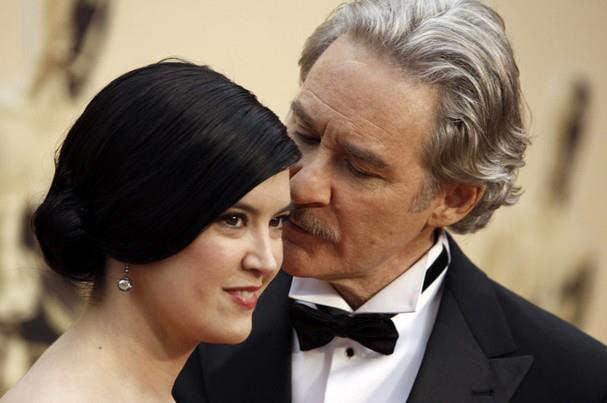

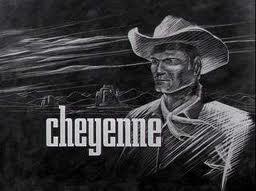

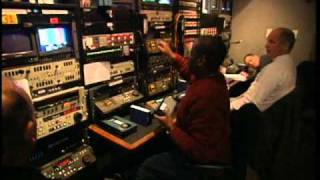

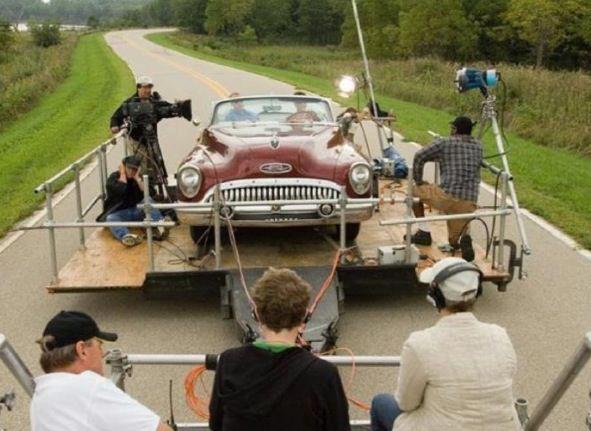

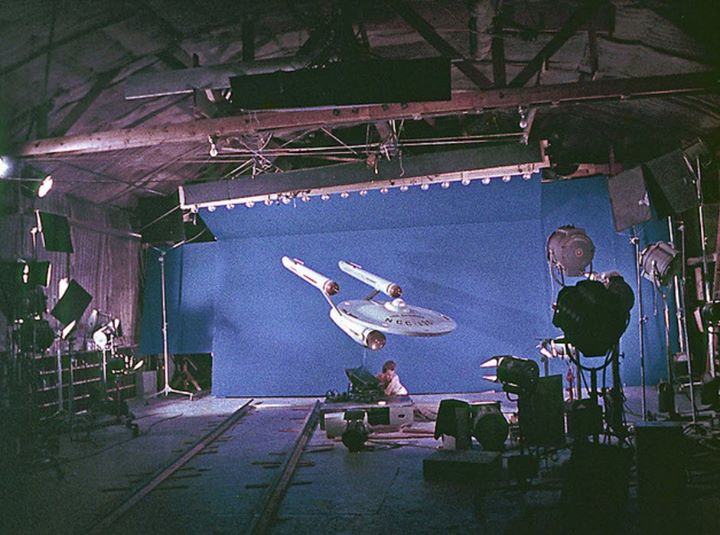

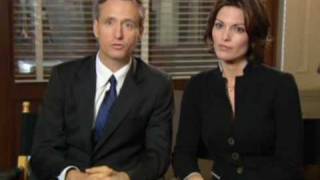

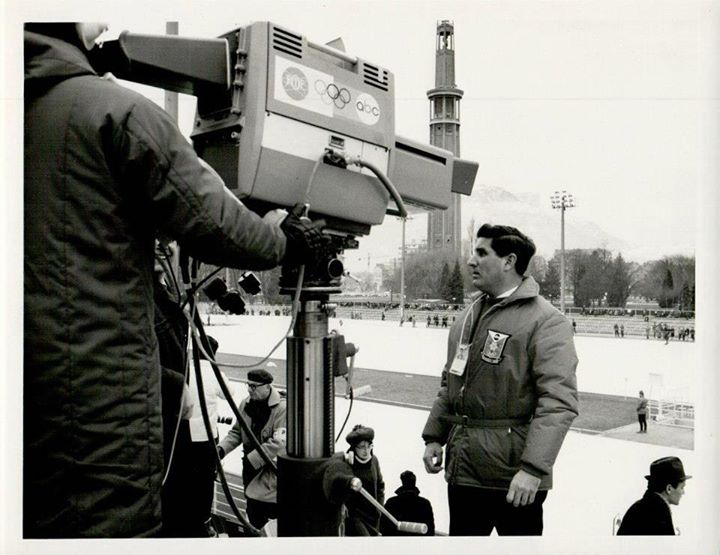



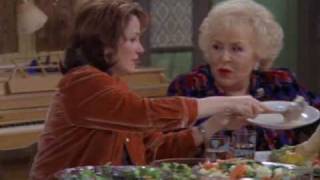

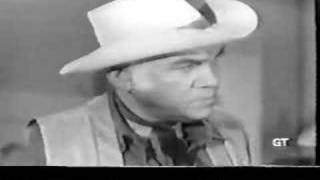

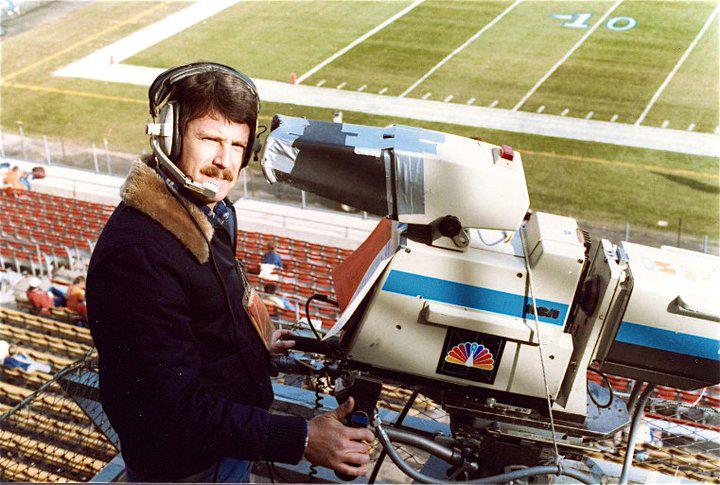

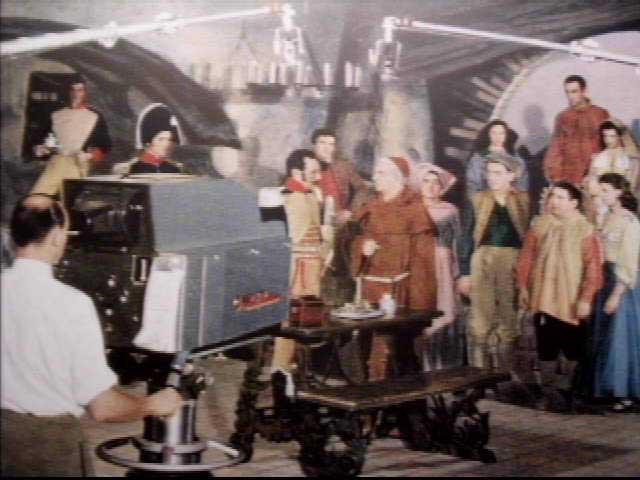

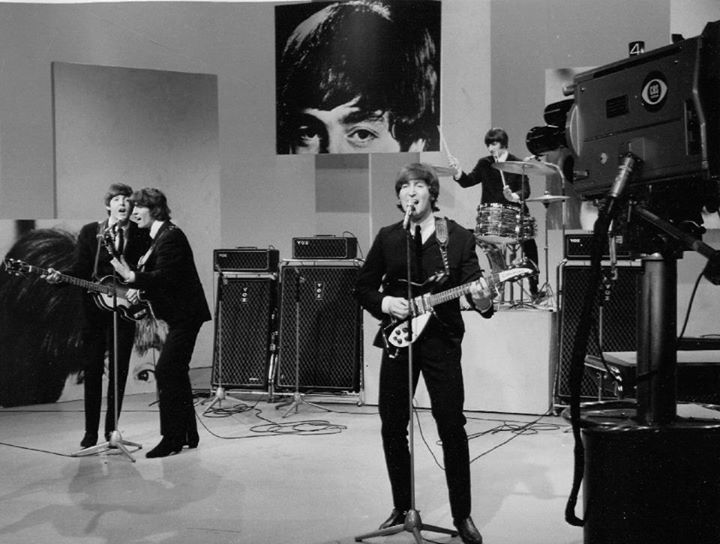

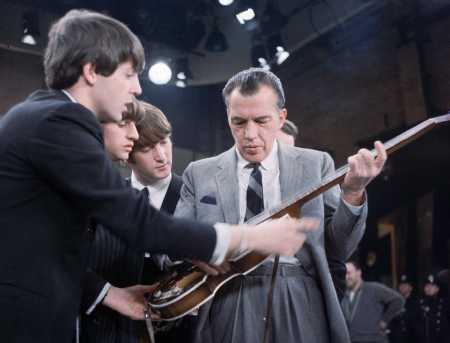

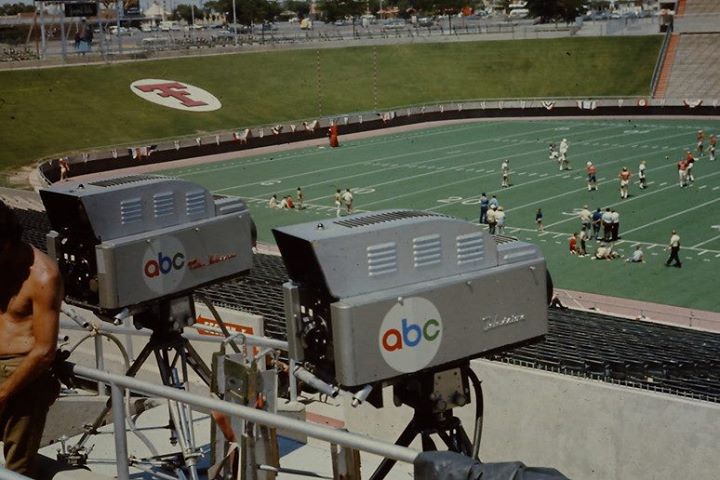

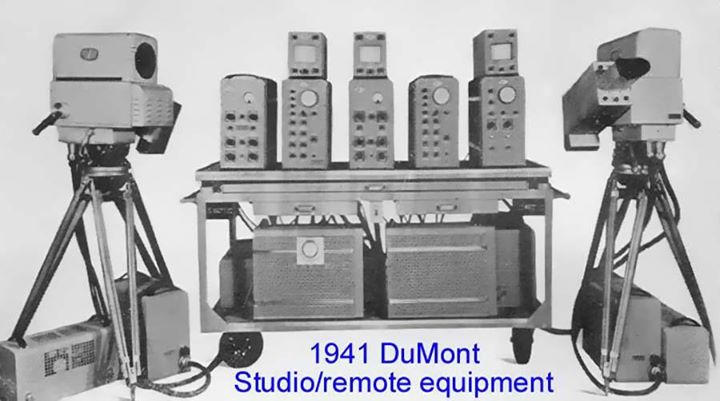

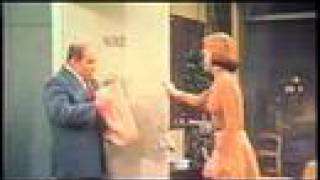

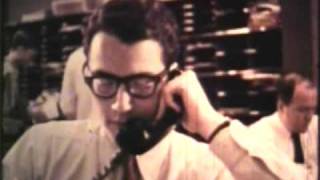

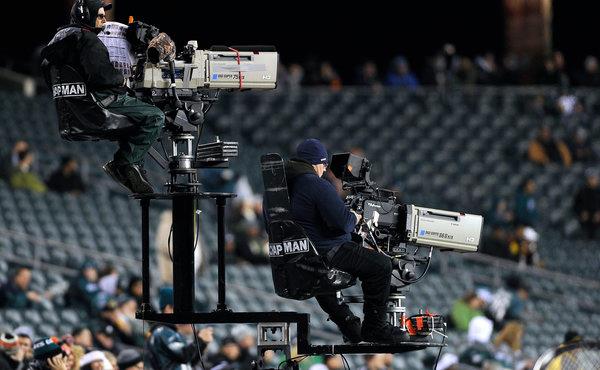



In The Beginning…ESPN Debuts
Posts in Category: TV History
Page 119 of 136
« Previous
1
2
3
4
5
6
7
8
9
10
11
12
13
14
15
16
17
18
19
20
21
22
23
24
25
26
27
28
29
30
31
32
33
34
35
36
37
38
39
40
41
42
43
44
45
46
47
48
49
50
51
52
53
54
55
56
57
58
59
60
61
62
63
64
65
66
67
68
69
70
71
72
73
74
75
76
77
78
79
80
81
82
83
84
85
86
87
88
89
90
91
92
93
94
95
96
97
98
99
100
101
102
103
104
105
106
107
108
109
110
111
112
113
114
115
116
117
118
119
120
121
122
123
124
125
126
127
128
129
130
131
132
133
134
135
136
Next » My Amazing Conversation with Kevin Kline, On TV History
On February 16, 2013
- TV History
My Amazing Conversation with Kevin Kline, On TV History
I was fortunate enough to have a couple of ten minute conversations with Kevin Kline yesterday and of all things, we talked mostly about television history…and you will not believe his connection to a True Pioneer! One that I had never heard of, but wait to you hear this story!
In case you had forgotten, Kevin is married to actress Phoebe Cates, and they are pictured here. Her father was Joseph Cates, and has an incredible history that I had never known about. Till now…
In 1949, Joe Cates was an associate producer on Dumont’s ‘Cavalcade Of Stars’ which was hosted by comedian new to television, named Jackie Gleason. Although ‘The Honeymooners’ was still a couple of years away, Jackie and Joe had been talking about the idea for a while and it was Joe Cates that introduced Gleason to Art Carney, who he thought would be a good actor to play his friend! According to Kevin, ‘The Honeymooners’ set is a duplicate of Joe’s apartment where he and Gleason often met for drinks and plans.
Although he wanted to work with Gleason on ‘The Honeymooners’, Joe was made the producer of two other shows…’Buck Rogers’, and ‘The Sammy Kaye Show’! In 1955, Joe became the executive producer for ‘The $64,000 Question’. This is amazing isn’t it? But, we’re just getting started! Let’s back track to the days before ‘Cavalcade of Stars’
While working in advertising after the war he got the idea of using television to sell candy, and signed a contract with Dumont to do a high-school talent search program he called ‘Look Upon a Star,’ with Bess Myerson, the 1945 Miss America, as host. Operating on a $100 budget, limited to two cameras and facing the unforgiving pace of live television, Mr. Cates managed to pull it off and emerged as one of the most experienced and skilled variety-show production specialists in a fledgling medium.
While working at Dumont with Gleason and Carney on ‘The Cavalcade of Stars’ he also worked on ‘The Cavalcade of Bands,’ which set off a deep interest in music specials as well as comedy which lead him to NBC to produce the ‘Bob and Ray’ show.
His network experience helped lay the groundwork for his later career as an independent producer, which included a succession of specials with Alan King, Robert Klein, Steve Martin and other comedians, and more than 200 circus programs, not to mention a string of David Copperfield magic shows and a number of musical programs for Gene Kelly, Ethel Merman, Victor Borge, Perry Como, Andy Williams, Nat King Cole and others.
By his own estimate, from the live high school talent program he staged for the old Dumont network in the late 1940’s to his string of fund-raising specials for Ford’s Theater in Washington, Mr. Cates wrote, directed and produced more than 1,000 television productions.
Joseph Cates, was born Joseph Katz, but interestingly, this native New Yorker was infatuated with country music and did dozens of country music specials produced with the help of his friend, Johnny Cash. Those shows, which used sophisticated lighting and other softening techniques, were credited with making country music safe for a mass medium, and the country music industry was so grateful that Mr. Cates became the only producer honored by the Country Music Hall of Fame.
I am very thankful that Kevin Kline took the time to tell me about the incredible history of his father-in-law and for being such an easy man to talk with. He is truly charming and has been one of my favorite actors for a long time. He has been in many more things than we both can think of and here is an amazing list of his pictures.
https://www.imdb.com/name/nm0000177/?ref_=nv_sr_srsg_0
For more on Joseph Cates, take a look here…
http://www.imdb.com/name/nm0146068/?ref_=fn_al_nm_1
Cheyenne! Many Firsts For This Show
On February 15, 2013
- TV History
Cheyenne! Many Firsts For This Show
The Warner Bros. Television story began in 1955 and it began with Cheyenne. In those early pioneering days, comedy was the king of the small screen, but Warner Bros. Television targeted a different genre, the dramatic series—and carved out an important new and very successful niche.
Cheyenne’s legacy consists of 108 black-and-white episodes broadcast on ABC from 1955 to 1963. The show was the first hour-long western, and in fact the first hour-long dramatic series of any kind, with continuing characters, to last more than one season.
Clint Walker was the star and played the roll of Cheyenne Bodie. Another first includes a strike by Walker for better terms and a increased residuals in the 58–59 season. The interim saw the introduction of a virtual Bodie-clone called Bronco Layne, played by Ty Hardin, a native of Texas. Hardin was featured as the quasi main character during Bodie’s absence. When Warners renegotiated Walker’s contract and the actor returned to the show in 1959, Bronco was spun off as a show in its own right and became independently successful. In the clip below, you’ll see Dan Blocker as a deputy…a recurring role for a few seasons until he was cast in Bonanza.


Pressure? What Pressure? CBS Sports, Behind The Scenes
On February 14, 2013
- TV History, Viewseum
Pressure? What Pressure?
As you’ll see, getting clips in, edited and on the air for update shows, during multiple basketball games is quite a challenge.
Oh, Now I See How They Do It!
On February 14, 2013
- TV History
Oh, Now I See How They Do It!
Ever wonder how they got a lot of driving sequence shots? Me too, but now we see how it’s done. This is called a ‘Process Trailer’. When the platforms on each side of the car are let down, the rig is 15 feet wide, but with them up, it’s the width of a normal trailer. Next time you see a driving scene in an older production, look to see where the center lane marks are in the background. Process trailers are still in use, but these days there are a lot of very clever car mounted rigs.
Bridge to Captain Pike? It could have been!
On February 13, 2013
- TV History
Bridge to Captain Pike?
It could have been! In a very unusual twist, NBC ordered a second pilot of Star Trek. In the original, the captain’s name was Christopher Pike and was played by Jeff Hunter. In the second pilot, James T Kirk appeared as William Shatner was now free from obligations that prevented him from doing the first pilot. Creator Gene Roddenberry shows us some rare footage and tells the story. Below is the original Enterprise model being readied for the second pilot.


Law & Order: A Quick Look Behind The Scenes
On February 13, 2013
- TV History
Law & Order: A Quick Look Behind The Scenes
Nice look at some of the sets and locations and a look back at the cast members that have played the principal rolls.
http://www.youtube.com/watch?v=-gQYHYP_m-g
Take a quick behind the scenes look at NBC’s Law & Order, which is celebrating its 20th season. The show’s new night and time is Friday at 8:00 PM ET/ 7C on …
Grenoble Winter Olympics: 1968…
On February 11, 2013
- TV History
Grenoble Winter Olympics: 1968…One Of The Few Bright Spots
1968 was a hard year in America. Robert Kennedy and Martin Luther King were assassinated. Riots were everywhere after the King killing, there were riots over the war in Vietnam and riots in Chicago at the Democratic Convention. Bras and draft cards were burned, but, the Olympic flames in Grenoble warmed us a bit with the success of Peggy Fleming and the US hockey win over Russia. The year ended on an up-note with 3 American’s circling the moon.


First Grammy Telecast: 1971 on ABC
On February 10, 2013
- TV History
First Grammy Telecast: 1971 on ABC
Although the Grammy Awards began in 1958, it took an unbelievable 13 years for the show to come to television. ABC broadcast the first two, but since, CBS has had the show. Andy Williams was the host and presenters even included John Wayne. Below, ABC’s promo for the event.


Funny Stuff! ‘Everybody Loves Raymond’ Outtakes
On February 10, 2013
- TV History
Funny Stuff! ‘Everybody Loves Raymond’ Outtakes
http://www.youtube.com/watch?v=SAOGRAfVMKg
Everybody Loves Raymond Bloopers – Season 3


The Cussin’ Cowboys From The Ponderosa! “Bonanza” Bloopers
On February 10, 2013
- TV History
The Cussin’ Cowboys From The Ponderosa!
First, this clip appears to freeze a few times, but let it play…it’s not your computer…just the way is was recorded. Second, the ‘good hard cussin’ is in the last half. Interesting to see Hoss without his hair piece. Enjoy!
http://www.youtube.com/watch?v=f0Yso9Vwh_A
Bloopers from the hit western Bonanza. Be warned there is some bad language.
The First Major ‘Shrinkage’: 1977
On February 10, 2013
- TV History
The First Major ‘Shrinkage’: 1977
The RCA TK760 was the fist ‘light weight’ color camera that could handle a box lens. In essence, it was a TK76 ENG camera modified to be used with a big viewfinder and lens. Some broadcasters used them in the studio while NBC chose to use them on their sports and remote trucks. In 78 and 79, NBC bought around 40 of these to replace the 35 Norelco’s on the trucks that were purchased around 1967. Thanks to David Crosthwait for this photo taken in 84 at Mile High Stadium in Denver. I wonder what ever happened to the 6 RCA TK41s that NBC stored at the stadium?
The Kraft Television Theater: NBC, May 1947 – October 1958
On February 10, 2013
- TV History
The Kraft Television Theater: NBC, May 1947 – October 1958
After the Kraft Television Theater ended, TV Guide did a tribute article about the series. The article stated that the series had aired more than 650 plays that were chosen from 18,845 scripts. The rehearsals for the 6,750 roles took 26,000 hours on 5,236 sets. The first play had cost $3,000 to produce and the last cost $165,000!
The Kraft Television Theater didn’t take summer breaks and aired pretty much twelve months out of the year for its entire run and was done live each week.
Incredibly, the show was so popular and so well funded by Kraft that it aired on both NBC and ABC (but on different nights) during the Fall 1953 and Fall 1954 seasons. Why? Kraft had a new product…Cheese Whiz and they wanted to sell more! It would be interesting to know if the ABC shows were kine copies of the NBC show that aired earlier in the week, or, ‘the best of’ some of the shows from past seasons.
Kraft continued to sponsor TV shows after the Kraft Television Theater ended but they switched from dramatic anthology series to musicals bu bringing the Music Hall from NBC radio to NBC TV in 1958. Milton Berle hosted during the 1958 season. Beginning with the fall 1959 season, Perry Como became the host, and continued until 1967 (as a monthly series from 1963 through ’67)
The photo below was taken during rehearsal for the December 16, 1953 broadcast of ‘To Live In Peace’, staring Anne Bankroft. This was telecast in compatible color the night before the FCC gave the official go ahead for commercial color broadcasts. The studio was the famous RCA/NBC color testing facility, The Colonial Theater. The camera is an RCA TK40.
The Whole Story In Detail: Ed Sullivan and The Beatles!
On February 9, 2013
- TV History
The Whole Story In Detail: Ed Sullivan and The Beatles!
There are a number of stories regarding exactly how The Beatles came to appear on The Ed Sullivan Show. The most popular is that in 1963, while arriving at London’s Heathrow airport, Ed Sullivan and his wife Sylvia encountered thousands of youngsters waiting excitedly in the rain. When Sullivan asked what all the commotion was about, he was told that a British band named The Beatles was returning home from a tour in Sweden. When he got to his hotel room, Sullivan purportedly inquired about booking the group for his show.
However, it was not until later that year that The Beatles’ manager Brian Epstein reached an agreement with Ed Sullivan to bring the group to America to perform live for the first time on U.S. television. Following dinner at the Hotel Delmonico in New York City, a handshake between the two men sealed the deal for performances on three shows to air in 1964. In return, The Beatles would receive $10,000 for their three appearances and top billing. FYI, Elvis Presly got $50,000 for 3 appearances.
Prior to their debut on the Sullivan show, The Beatles’ record “I Want to Hold Your Hand” was leaked in advance of its planned US release to radio stations across the country. When attorneys for Capitol Records were unable to stop American DJs from spinning the tune, the record label relented and, on December 26, 1963, dropped the album ahead of schedule. The record sold 250,000 copies in the first three days. By January 10, 1964 it had sold over one million units and “I Want to Hold Your Hand” was the number one song on the Billboard charts by month’s end. In the weeks leading up to The Beatles’ performance on The Ed Sullivan Show, Beatlemania went viral. Radio stations played the band’s music nearly non-stop; teenaged fans sported “Beatle” wigs, and bumper stickers across the country warned, “The Beatles Are Coming.”
The Beatles touched down at New York’s Kennedy Airport on February 7th, 1964. They were met by a throng of reporters and a hoard of three thousand screaming fans. Upon disembarking the plane, The Beatles were whisked to a press conference hosted by Capitol Records in which they playfully answered questions from the media.
While The Beatles spent the next two days cooped up at The Plaza Hotel, fans did all they could to get closer to the band. Groups of teenagers set up camp outside The Plaza, some even posing as hotel guests in an attempt to see their favorite group. As the show approached, over 50,000 requests for seats came into CBS. However, The Ed Sullivan Show, which originated from CBS’s TV Studio 50, could only accommodate an audience of 700.
For weeks, celebrities were calling in to get tickets for their kids. Walter Cronkite and Jack Paar scored seats for their girls; composer Leonard Bernstein tried but failed; while Richard Nixon’s 15-year old daughter, Julie, became one of the lucky few to get a seat. Even Sullivan himself had trouble getting extra tickets. On his show the week before The Beatles’ debut, Ed asked his audience, “Coincidentally, if anyone has a ticket for The Beatles on our show next Sunday, could I please borrow it? We need it very badly.”
It should be remembered that while this hullabaloo was happening, there was still an air of gloom in America. Just 77 days prior to The Beatles’ appearance on Sullivan, President Kennedy had been assassinated. By now, the country was ready for some much needed diversion, and it came in the form of four young lads from Liverpool – their sound, their look, their energy and their charisma.
At 8 o’clock on February 9th 1964, America tuned in to CBS and The Ed Sullivan Show. But this night was different. 73 million people gathered in front their TV sets to see The Beatles’ first live performance on U.S. soil. The television rating was a record-setting 45.3, meaning that 45.3% of households with televisions were watching. That figure reflected a total of 23,240,000 American homes. The show garnered a 60 share, meaning 60% of the television’s turned on were tuned in to Ed Sullivan and The Beatles. Cumulatively, the four shows attracted an audience of a quarter of a BILLION people. In terms of percentage of America’s population, the first two shows remain the highest viewed regularly scheduled television programs of all time.
Ed opened the show by briefly mentioning a congratulatory telegram to The Beatles from Elvis and his manager, Colonel Tom Parker and then threw to advertisements for Aero Shave and Griffin Shoe Polish. After the brief commercial interruption, Ed began his memorable introduction:
“Now yesterday and today our theater’s been jammed with newspapermen and hundreds of photographers from all over the nation, and these veterans agreed with me that this city never has witnessed the excitement stirred by these youngsters from Liverpool who call themselves The Beatles. Now tonight, you’re gonna twice be entertained by them. Right now, and again in the second half of our show. Ladies and gentlemen, The Beatles! Let’s bring them on.”
At last, John, Paul, George and Ringo came onto the stage, opening with “All My Loving” to ear-splitting screeches from teenaged girls in the audience. The Beatles followed that hit with Paul McCartney taking the spotlight to sing, “Till There Was You.” During the song, a camera cut to each member of the band and introduced him to the audience by displaying his first name on screen. When the camera cut to John Lennon, the caption below his name also read “SORRY GIRLS, HE’S MARRIED.” ( this was mimicked in the movie That Think You Do). The Beatles then wrapped up the first set with “She Loves You,” and the show went to commercial. Upon return, magician Fred Kaps took the stage to perform a set of sleight-of-hand tricks.
Concerned that The Beatles’ shrieking fans would steal attention from the other acts that evening, Ed Sullivan admonished his audience, “If you don’t keep quiet, I’m going to send for a barber.”
As hard as Ed tried to protect them, the other acts that night suffered from the excitement surrounding The Beatles. Numbered among those performers were impressionist Frank Gorshin, acrobats Wells & the Four Fays, the comedy team of McCall & Brill and Broadway star Georgia Brown joined by the cast of “Oliver!”
The hour-long broadcast concluded with The Beatles singing two more of their hits, “I Saw Her Standing There” and “I Want to Hold Your Hand” to the delight of the fans in attendance and those watching at home.
The show was a huge television success. As hard as it is to imagine, over 40% of every man, woman and child living in America had watched The Beatles on Sullivan.
John Moffitt, then Assistant Director of The Ed Sullivan Show recalls, “Nobody realized the impact to come, how momentous it would be. We didn’t talk about making history. It was more like, ‘What are we going to do next week? Not only are we doing this again, we’re on location.’”
That’s because The Beatles’ second appearance on February 16th, 1964, was broadcast from The Deauville Hotel in Miami Beach, Florida. Moffitt remembers how fans took over the venue, and when it was time for The Beatles to perform, a teaming throng of teenagers blocked the group’s access to the ballroom. As security guards wedged a passageway through the crowd for The Beatles, the show was being broadcast to America. Unaware of the delay, Ed was about to introduce them. Moffitt recalls…
“Ed is saying ‘And now, here are—(a beat)—The Beatles right after this.’ And he went to a commercial. And during the commercial, finally at the end, The Beatles broke through, they came running up the aisle, they got hooked up, and I believe there was one microphone that didn’t get hooked up. But you couldn’t tell because all you could hear was the screaming.”
Audio difficulties aside, the boys plowed through “She Loves You,” “This Boy” and “All My Loving” for their first set, then turned the stage over to the comedy team of Allen and Rossi (“Hello, Dere”), singer/dancer Mitzi Gaynor, acrobats The Nerveless Knocks and monologist Myron Cohen.
The Beatles returned to close the show with performances of “I Saw Her Standing There,” “From Me to You” and “I Want to Hold Your Hand.” After they finished, Ed called them over and congratulated them, passing along word that legendary composer Richard Rodgers was one their “most rabid fans.”
Again, The Beatles on Sullivan proved a huge ratings success, nearly duplicating the record-setting performance of their first appearance. The second show also attracted 40% of the American population.
The Beatles third and—according to their contract—final performance on The Ed Sullivan Show was technically their first. The show was taped prior to their live February 9th debut, but saved for broadcast until February 23rd, 1964. On this show, The Beatles sang “Twist and Shout”, “Please Please Me” and “I Want to Hold Your Hand.” Other guests that night included stand-up comedian Dave Barry, Gordon and Sheila MacRae, and the legendary American jazz singer Cab Calloway.
On September 12th, 1965, The Fab Four returned to the Ed Sullivan stage one last time. They played “I Feel Fine,” “I’m Down,” “Act Naturally,” “Ticket to Ride,” “Yesterday,” and “Help!” This performance was taped in New York on August 14th, 1965, just one day before The Beatles kicked off their North American Tour with a concert at Shea Stadium that set the attendance record for an outdoor show at the time.
The final appearance of the Beatles on Ed Sullivan, like those in February 1964 aired in black and white. However, at the end of the evening, Sullivan broke the news that the following week, his show would start broadcasting in color. In fact, the show moved to Television City in Los Angeles for 6 weeks of color broadcasts while Studio 50 was being overhauled for color with new lighting and six, custom made Norelco PC71 cameras. The man CBS put in charge of the overhaul was Joseph Flaherty who spoke about that here last week.
These four historic Beatles performances on The Ed Sullivan Show featured 20 Beatles songs—seven of which became Number One hits. Their success on The Ed Sullivan Show paved the way for future rock ‘n’ roll groups dubbed the British Invasion, including The Rolling Stones, The Animals, The Dave Clark Five, Herman’s Hermits,The Searchers, Gerry and the Pacemakers, Peter and Gordon, etc.
The genius of The Beatles and the American institution that was The Ed Sullivan Show combined to create one of the most defining and indelible moments in the history of music, television and pop culture. It was a remarkable convergence that came at a special time in America, making an impact on the world that will never be duplicated.
Thanks to SOFA Entertainment for much of the information above. The company is owned by Andrew Solt, who in 1990 purchased the complete video library and all rights to The Ed Sullivan Show. The site, linked below, has the best historical information on the show and the theater I have found so far. Many thanks to Mr. Solt for preserving these historical treasures for generations to come!
http://www.edsullivan.com/
Beatles Prelude: A Few SURPRISES!
On February 8, 2013
- TV History
Beatles Prelude: A Few SURPRISES!
In 1964, today February 8th, would have been Saturday. The first Beatles rehearsal for Ed Sullivan began at 1:30 PM Saturday afternoon at Studio 50. Here is a rundown of the day and a few BIG SURPRISES!
Surprise 1…The Beatles ‘THIRD’ appearance was actually their FIRST appearance! The Sunday afternoon dress rehearsal (2/8/64) was taped with a different audience than the ‘debut’s show, and was played back as the third consecutive week of the Beatles live on Sullivan. The play back date was February 23rd.
Surprise 2…George Harrison almost didn’t make it! He had strep throat and a fever of 104. He was not at the Saturday rehearsals. That’s why you only see John, Paul and Ringo in the shot with Ed examining Paul’s Hofner bass guitar.
Here’s what happened at Studio 50, 49 years ago today…
In the morning a press conference was held in the Baroque Room at New York’s Plaza Hotel, where The Beatles were staying. Following this John Lennon, Paul McCartney and Ringo Starr went for a walk and photo opportunity in Central Park, where their every move was followed by around 400 female fans.
George Harrison was suffering from a streptococcal sore throat, and so remained in the Plaza. He was joined there by his sister Louise Caldwell, who lived in Illinois.
The doctor said he couldn’t do The Ed Sullivan Show because he had a temperature of 104! But they pumped him with everything. He was thinking about getting a nurse to administer the medicine, every hour on the hour. Then the doctor suddenly realized that George’s sister was there and he said to her, ‘Would you see to it? It’s probably just as well that you’re here because I don’t think there’s a single female in the city that isn’t crazy about The Beatles! You’re probably the only one who could function around him normally’.
At 1.30 PM, The Beatles – minus George – traveled by limousine to the CBS studios on Broadway for the first of several rehearsals for their debut appearance on The Ed Sullivan Show. During the journey their cars were charged by fans, and mounted police were forced to intervene to keep order. Ten mounted police guarded the studio along with 52 officers while The Beatles were inside. Their first duty was to join AFTRA and the musicians’ union.
For the rehearsals, road manager Neil Aspinall stood in for George, as did production assistant Vince Calandra, while the director rehearsed the camera positions for the following day’s show. It’s a good thing there were several camera rehearsals…during the show, none of the cameramen could hear the director in their headphones! The screaming fans were just too loud.
Afterwards The Beatles asked to see a playback of their rehearsal, which no other musical act had previously asked for. In the evening Lennon, McCartney and Starr went to the famous ’21’ restaurant with George Martin and executives from Capitol Records. The Beatles ate chops while their music industry companions had pheasant.
Heavy Metal Flashback: 1971
On February 8, 2013
- TV History
Heavy Metal Flashback: 1971
With football and TK41s on my mind, I thought this would be an excellent time for a second visit to Texas Tech with ABC! Enjoy!
Amazingly, till now, there are only 5 or 6 photos of TK41s showing them at football games. In this great 8 photo array, we see the ABC live trucks arrive with 6 TK41s on board, the hard slog of getting them in place and finally victory as two of the titans of color are set up and ready. Interestingly, these photos were taken in 1971 at Texas Tech. Enjoy and tell your friends to come take a look!
Dumont Iconoscope Camera Chains
On February 8, 2013
- TV History
Dumont Iconoscope Camera Chains
Pictured here are two complete chains for studio and field use. Everything on the cart can be placed in a truck or control room, but notice the two elements at the foot of each tripod. Those had to be with the camera head…one element is an amplifier and the other, a power supply. Dumont made a pedestal that housed both, and that pedestal was nick named ‘the ice cream truck’ for some reason. When the camera was mounted on a tripod, things got a bit tricky because you either had to be stationary or have a special wheel set that included a solid base to set these elements on.
I think the electronic viewfinder was a fantastic addition and have no idea why RCA did not do this early on too. It may have been because of the extra outboard gear as I think at least one of the elements located with the camera head was involved in powering the viewfinder. Does any one know more about these cameras and which pieces of gear do what?


Did She Really Say That? Yep! MTM Bloopers…
On February 8, 2013
- TV History
Did She Really Say That? Yep!
This is funny and you’ll hear some words from George Carlin’s ‘7 Words You Can’t Say’ routine…even from Mary! Enjoy!
http://www.youtube.com/watch?v=O4XHXeiMRSk
This is the original gag reel from the final season of the MTM Show. Enjoy!


Surprise Discovery! Sam Donaldson…Cub Reporter, 1967
On February 7, 2013
- TV History, Viewseum
Surprise Discovery! Sam Donaldson…Cub Reporter, 1967
At 11:05 you’ll see WTOP TV shooting film then picking up the story in the studio with a very young Sam Donaldson on the set with an RCA TK41. You’ll even see him in the viewfinder! Sam’s part actually starts at 10:27 and he is back with the TK41 at 13:15. Enjoy!
Up Close And Personal, Here is a good look at the Chapman Hi-Lo
On February 7, 2013
- TV History
Up Close And Personal
Here is a good look at the Chapman Hi-Lo sideline camera rig. It was built a couple of years back for ESPN but saw duty at this year’s Super Bowl. The weights under the lenses are counterbalances for the cameraman’s weight. The top platform can swivel 360 degrees and the bottom about 240 degrees. What a great ride!
In The Beginning…ESPN Debuts September 7, 1979
On February 6, 2013
- TV History
The Entertainment and Sports Programming Network, had an interesting beginning in Bristol, Connecticut, and believe it or not, came to be with the help of Getty Oil. The whole story is at the link and this photo is from Day 1 and shows their first cameras, the Norelco PC70s on the Sports Center set. http://en.wikipedia.org/wiki/History_of_ESPN
As we will learn in this report from The Davenport Sports Network, there is actually more than one “angel” helping this fledgling experiment come to life.
On September 7, 1979 at 7:00 p.m. Eastern Time, an estimated 30,000 viewers tuned in to witness the launch of ESPN. Simultaneously, ESPN debuted its first SportsCenter telecast with anchors Lee Leonard and George Grande. The first words spoken were from Leonard who informed viewers: “If you love sports…if you really love sports, you’ll think you’ve died and gone to sports heaven.” The first score Grande announced was Chris Evert’s victory over Billie Jean King at the US Open. SportsCenter lasted a half-hour, consisting mainly of videotaped highlights. Following the conclusion of the telecast, the network aired a slow-pitch softball game along with other programming, including wrestling and college soccer. ESPN struggled financially during its early years. In 1980, Anheuser-Busch Vice President and Director of Marketing Michael Roarty persuaded his company to invest $1 million in ESPN. Anheuser-Busch gave an additional $5 million to the network in 1981. Roarty saw these investments as a smart business decision, telling the St. Louis Post-Dispatch in 1994, “We gave them $1 million that first year. And if we hadn’t, they’d have gone under…I believed the beer drinker was a sports lover…The next year we gave them $5 million. I think it turned out to be the best investment we’ve ever made.”
Page 119 of 136
« Previous
1
2
3
4
5
6
7
8
9
10
11
12
13
14
15
16
17
18
19
20
21
22
23
24
25
26
27
28
29
30
31
32
33
34
35
36
37
38
39
40
41
42
43
44
45
46
47
48
49
50
51
52
53
54
55
56
57
58
59
60
61
62
63
64
65
66
67
68
69
70
71
72
73
74
75
76
77
78
79
80
81
82
83
84
85
86
87
88
89
90
91
92
93
94
95
96
97
98
99
100
101
102
103
104
105
106
107
108
109
110
111
112
113
114
115
116
117
118
119
120
121
122
123
124
125
126
127
128
129
130
131
132
133
134
135
136
Next »